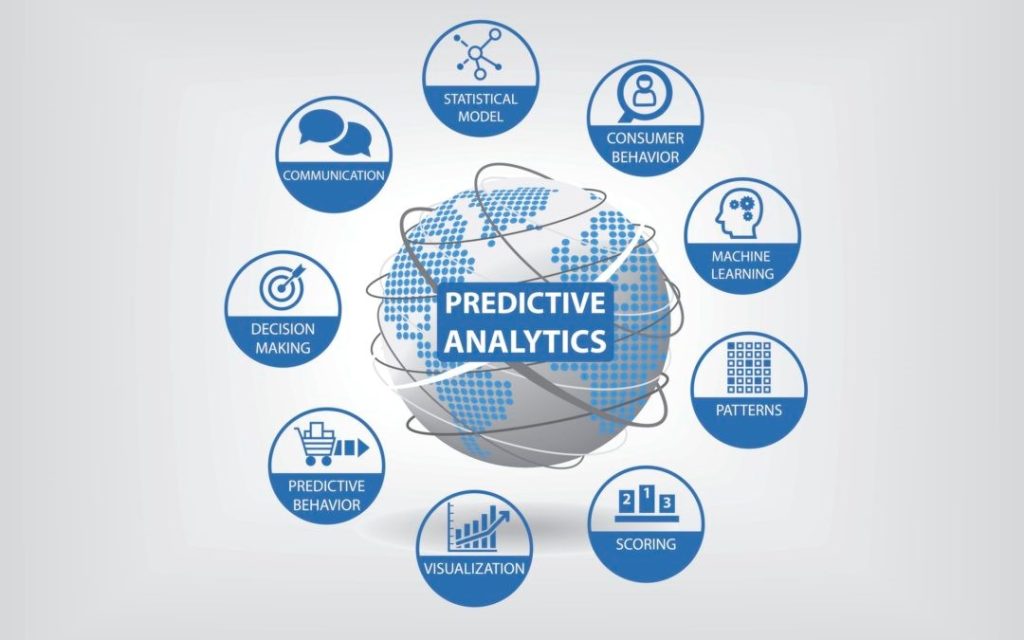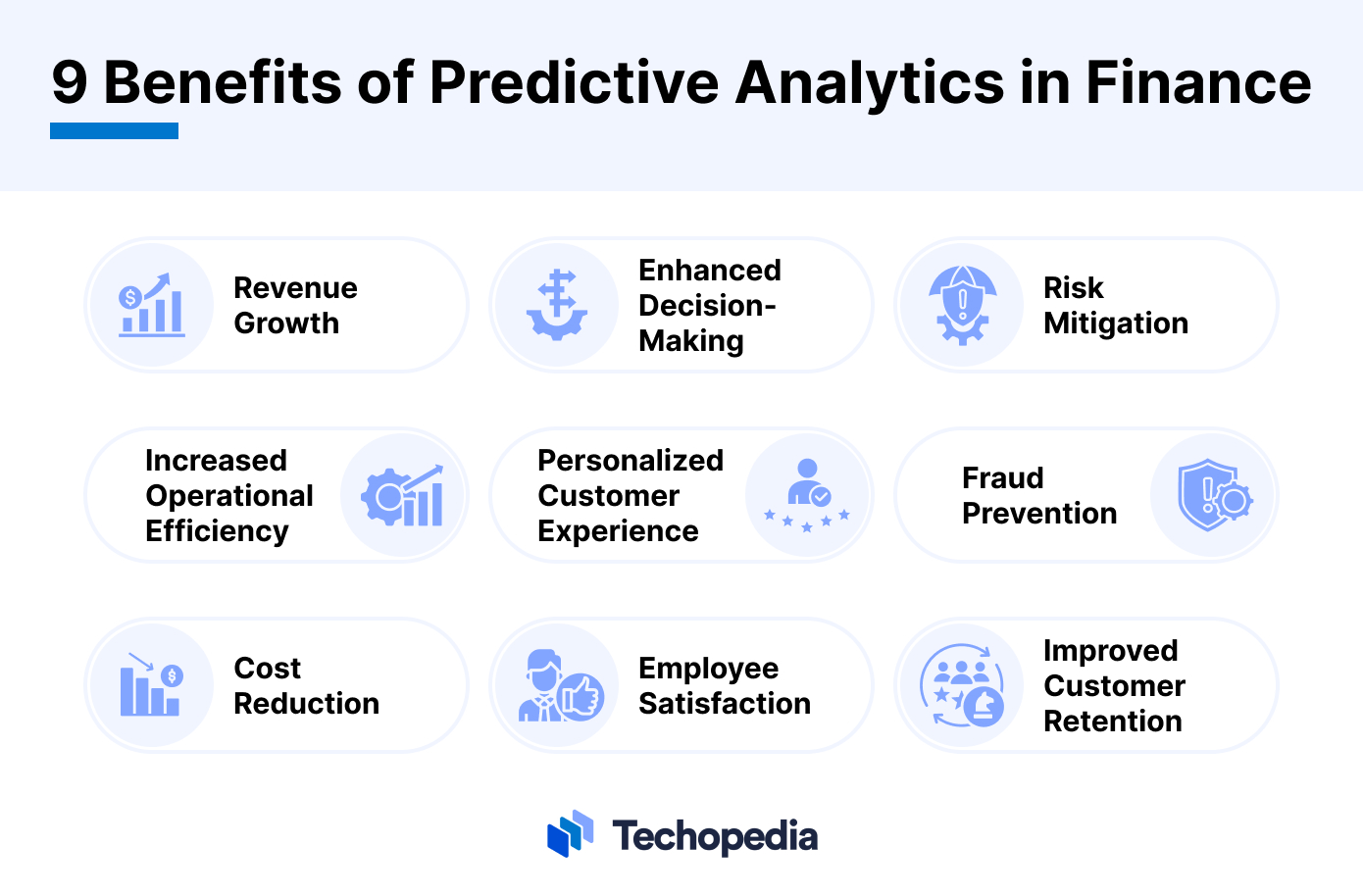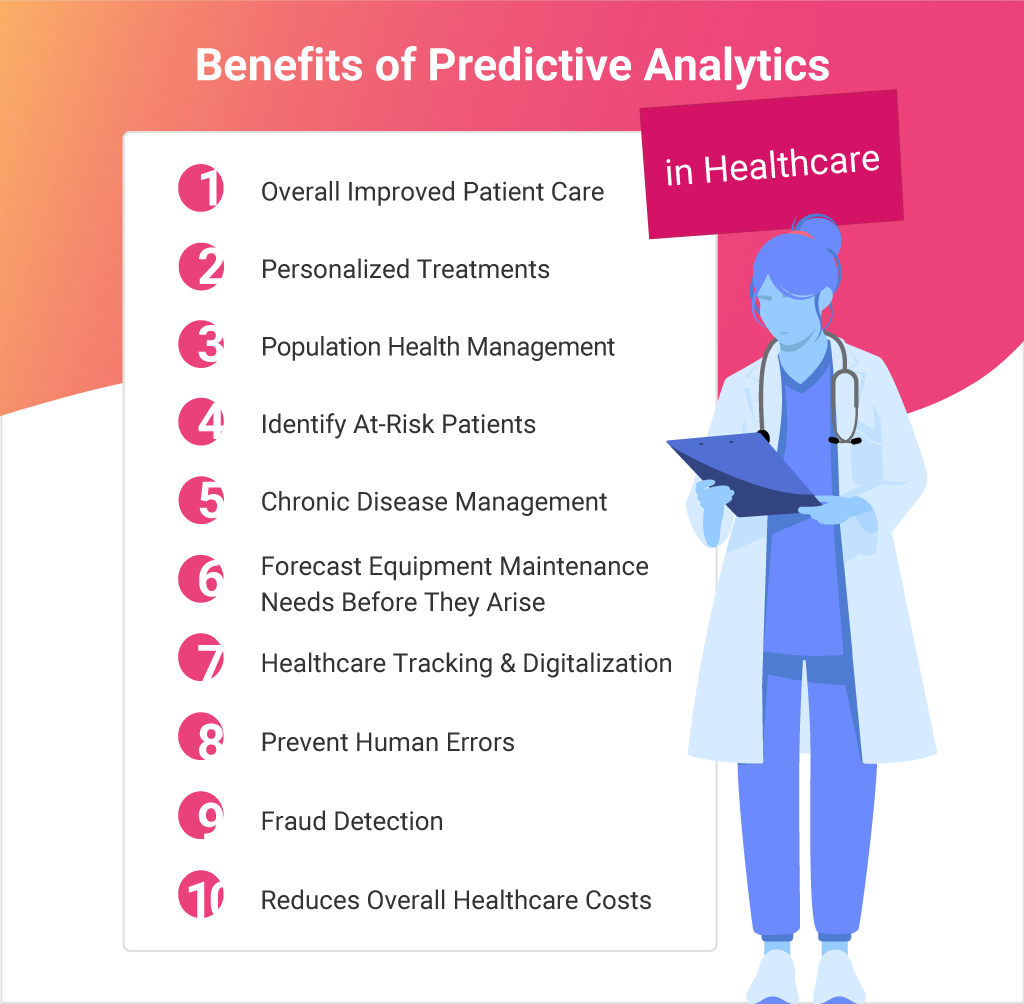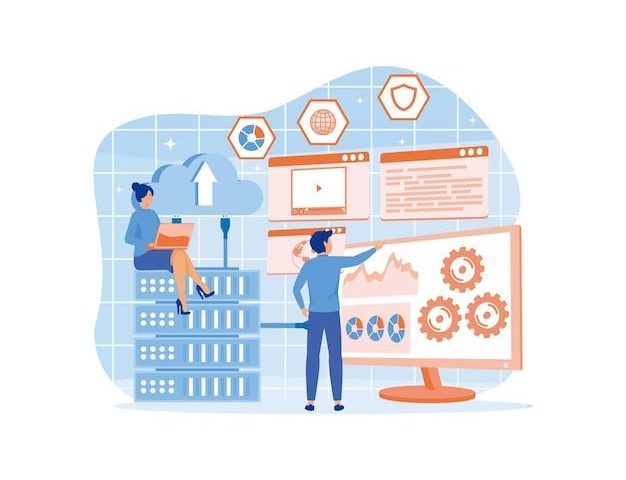AI in Predictive Analytics Solutions: Unlocking Future Trends and Patterns in the USA (2024 & Beyond)

Audio : Listen to This Blog.
I. Introduction
The digital age has ushered in an era of data deluge. Businesses and organizations across the USA are constantly bombarded with information – from customer transactions and sensor readings to social media interactions and financial records. While valuable, this vast data ocean remains largely untapped unless harnessed effectively. This is where predictive analytics solutions steps in, acting as a powerful tool to extract hidden insights and forecast future trends.
But the world of predictive analytics is undergoing a significant transformation. Artificial intelligence (AI) is emerging as a game-changer, pushing the boundaries of what’s possible.
By incorporating AI, US businesses and organizations can unlock a treasure trove of benefits.
Enhanced Accuracy: AI algorithms can crunch massive datasets, leading to more accurate and reliable predictions.
Real-Time Insights: AI facilitates real-time data processing, enabling businesses to react swiftly to evolving market conditions and customer needs.
Automated Decision Making: AI-powered analytics can automate certain decision-making processes, freeing up human resources for strategic tasks.
Personalized Experiences: Businesses can leverage AI to personalize customer experiences based on predicted needs and preferences.
The implications for US businesses and organizations are vast, paving the way for a future driven by data-driven insights and proactive decision making. So, buckle up as we explore how AI is transforming the landscape of predictive analytics in the USA.
This blog delves into the exciting intersection of AI and predictive analytics, exploring how the USA is harnessing this powerful duo to unlock future trends and patterns.
II. The Rise of AI-powered Predictive Analytics in the USA

Source: Futurism
The USA is witnessing a perfect storm brewing in the world of analytics. On one hand, data is exploding across every sector. From the constant stream of consumer purchases and social media interactions to the mountains of sensor data collected in manufacturing and the intricate financial records of banks, the sheer volume of information is staggering.
On the other hand, the hunger for insights and the need for real-time decision-making have never been greater. Businesses crave a way to navigate this data deluge and unlock its hidden potential. This is where AI-powered predictive analytics platforms step in, offering a powerful solution. These platforms analyze historical data to make predictions about future customer behavior, improve sales, marketing, and resource allocation, and automate forecasting processes.
Several key factors are fueling the rapid adoption of AI in predictive analytics across the USA:
Data Deluge Demands Predictive Analytics Tools
The sheer volume and complexity of data generated today are simply beyond the capabilities of traditional analytics methods, making advanced data analytics essential. AI algorithms, with their ability to handle vast datasets and identify intricate patterns, are perfectly suited to extract meaningful insights from this data ocean.
Computing Power Becomes Affordable
The rise of cloud computing and powerful GPUs has made the computational muscle required for complex AI algorithms readily available and affordable. This removes a major barrier to entry for businesses of all sizes, allowing them to leverage the power of AI for advanced analytics and predictive analytics.
Real-Time Insights for Real-Time Decisions
Businesses can no longer afford to wait for insights. Traditional analytics often rely on historical data, leaving businesses lagging behind. AI allows for real-time processing and analysis, enabling companies to react swiftly to changing market conditions, customer preferences, or emerging trends.
AI Techniques Make Leaps in Predictive Models
Machine learning and deep learning, the cornerstones of AI, are constantly evolving. These advancements empower AI to analyze data with ever-increasing sophistication, leading to more accurate and actionable predictions.
AI Techniques Make Leaps in Predictive Models
Machine learning and deep learning, the cornerstones of AI, are constantly evolving. These advancements empower AI to analyze data with ever-increasing sophistication, leading to more accurate and actionable predictions.
Real-World Examples of AI-powered Predictive Analytics in the USA
Let’s now explore some real-world examples of how AI, with its predictive analytics capabilities, is transforming predictive analytics across various industries in the USA:
Retail
In the retail sector, AI-powered predictive analytics tools are used to predict customer behavior and demand. By analyzing consumer data, retailers can develop targeted marketing strategies and optimize inventory management. For example, Walmart uses predictive analytics to forecast product demand, ensuring that they have the right products in stock at the right time, thereby reducing inventory costs and increasing customer satisfaction.
Finance

Source: Techopedia
The finance industry leverages predictive analytics to detect fraudulent transactions and assess creditworthiness. Banks and financial institutions use predictive modeling and AI models to analyze transaction patterns and identify anomalies that may indicate fraud. Additionally, predictive analytics helps in evaluating the credit risk of individuals and businesses, enabling better lending decisions. Companies like JPMorgan Chase employ AI to enhance their fraud detection systems and credit risk assessments.
Healthcare

Source: Reveal
In healthcare, predictive analytics plays a crucial role in early disease diagnosis, predicting patient outcomes, and personalized medicine. AI models and machine learning models analyze medical records, genetic data, and other health-related information to identify early signs of diseases and predict patient responses to treatments. For instance, IBM Watson Health uses AI-powered predictive analytics to assist in diagnosing cancer and suggesting personalized treatment plans based on patient data.
Manufacturing

Source: Manufacturing Tomorrow
Manufacturing industries utilize predictive analytics for predictive maintenance of equipment and optimizing production processes. By analyzing sensor data from machinery, predictive models can forecast equipment failures and schedule maintenance proactively, reducing downtime and repair costs. Companies like General Electric use AI-powered predictive analytics to monitor their equipment’s health and improve operational efficiency.
III. Key Benefits of AI in Predictive Analytics for the USA
AI-powered predictive analytics software offers a multitude of benefits, including enhanced accuracy, real-time insights, automated decision-making, improved customer experiences, effective risk management, and a strong competitive advantage.
Enhanced Accuracy and Precision
Traditional analytics methods often struggle with the sheer volume and complexity of modern data. AI algorithms, however, are built to handle this data deluge. By using statistical techniques to analyze vast datasets and identify intricate patterns invisible to human analysts, AI generates more accurate and precise predictions. Imagine a manufacturing plant predicting equipment failure with pinpoint accuracy, or a financial institution detecting fraudulent transactions before they occur.
These are just a few examples of how AI’s superior analytical power translates to real-world benefits.
Real-time Insights for Faster Action
In today’s fast-paced business environment, waiting for insights is a luxury companies can’t afford. Traditional analytics often rely on historical data, leaving businesses a step behind. Predictive analytics models, facilitated by AI, enable real-time data processing and analysis. This allows companies to react swiftly to changing market conditions, customer preferences, or emerging trends. Imagine a retail store adjusting its inventory levels based on real-time sales data, or a transportation company rerouting deliveries to avoid unexpected traffic congestion. AI empowers businesses to make data-driven decisions in the moment, leading to a significant competitive advantage.
Automated Decisions, Human Focus
Many business decisions involve repetitive tasks and data analysis, which can be efficiently managed using a predictive analytics tool. AI-powered predictive analytics can automate these processes, freeing up human employees to focus on more strategic initiatives. For example, AI can automatically approve low-risk loan applications based on pre-defined criteria, allowing loan officers to dedicate their time to more complex cases. This not only improves efficiency but also reduces the risk of human error in repetitive tasks.
Personalized Experiences, Delighted Customers
In today’s customer-centric world, personalization is key. AI-powered predictive analytics tools allow businesses to understand individual customer needs and preferences with unprecedented accuracy. Imagine a streaming service recommending movies you’ll love based on your viewing habits, or a travel company suggesting personalized vacation packages tailored to your interests. By leveraging AI’s predictive power, businesses can create highly personalized customer experiences that foster loyalty and boost satisfaction.
Risk Management
Proactive Protection: Every business faces potential risks. AI-powered predictive analytics can help identify and mitigate these risks proactively. For example, AI can analyze weather patterns and data to predict the likelihood of supply chain disruptions, allowing companies to take steps to mitigate the impact. Similarly, AI can be used to identify potential cybersecurity threats in real-time, enabling businesses to take preventive measures and minimize security breaches.
Innovation and a Competitive Edge
Data science in predictive analytics isn’t just about optimizing existing processes; it’s about driving innovation. By uncovering hidden patterns and generating future possibilities, AI can lead to the development of entirely new products, services, and business models. Imagine a healthcare company using AI to predict future disease outbreaks and develop preventive measures, or a manufacturing company using AI to design and produce customized products based on individual customer needs. AI empowers businesses to stay ahead of the curve and gain a significant competitive edge in the marketplace.
Challenges and Considerations for Data Scientists in AI Predictive Analytics
While AI in predictive analytics unlocks a vast array of benefits, it’s not without its challenges. As we navigate this exciting new frontier, it’s crucial to address these considerations to ensure responsible and ethical implementation:
Data Quality and Bias
The old adage “garbage in, garbage out” holds true for AI. The accuracy and effectiveness of AI models are heavily dependent on the quality of data used to train them. Biased or incomplete training data can lead to biased predictions, potentially perpetuating discrimination or unfair outcomes. For example, an AI model trained on loan data that favored certain demographics could continue that bias in future loan approvals. Mitigating this requires careful data selection, identifying and correcting potential biases, and ensuring the data accurately reflects the real world.
Explainability and Transparency
One of the biggest challenges with AI is the “black box” phenomenon. Complex AI algorithms can generate highly accurate predictions, but understanding how they arrive at those conclusions can be difficult. This lack of transparency can raise concerns about accountability and trust. The need for explainable AI (XAI) models is crucial. These models aim to provide insights into the reasoning behind AI predictions, allowing humans to understand the logic and identify potential biases.
Ethical Considerations
The widespread use of AI for predictive analytics raises several ethical concerns. Data privacy is paramount. As businesses collect and analyze vast amounts of personal data, robust data security measures and clear guidelines on data usage are essential. Additionally, algorithmic bias, as discussed earlier, can have significant societal consequences. It’s crucial to develop and implement AI models with fairness and ethical considerations in mind.
Furthermore, automation powered by AI could lead to job displacement in certain sectors. Strategies for reskilling and upskilling the workforce will be critical to navigate this potential challenge.
Security Risks
Handling large volumes of sensitive data for AI analytics inherently carries security risks. Cybersecurity threats like data breaches and unauthorized access can have devastating consequences. Implementing robust security protocols, encrypting sensitive data, and continuously monitoring for potential vulnerabilities are essential steps to mitigate these risks.
Talent and Expertise
Successfully harnessing the power of AI in predictive analytics requires a skilled workforce. Data scientists, machine learning engineers, and AI ethicists are essential to develop, manage, and implement these complex solutions. Investing in talent development and fostering a culture of continuous learning are crucial steps for businesses to bridge this talent gap and unlock the full potential of AI.
V. A Glimpse into the Future: AI and Predictive Analytics Reshape the USA
The future of AI in predictive analytics for the USA is brimming with exciting possibilities. Emerging trends in AI and the capabilities of most predictive analytics platforms will further refine and empower this powerful technology:
Explainable AI (XAI)
The “black box” phenomenon of AI is on the verge of being cracked. Advancements in XAI will lead to the development of more transparent AI models that can explain their reasoning behind predictions. This will increase trust and accountability in AI-driven decision making.
Generative AI to the Rescue
Data scarcity is a common hurdle in AI development. Generative AI offers a solution by using AI to create synthetic data that mimics real-world data. This synthetic data can be used to augment training datasets, leading to more robust and generalizable AI models.
Traditionally, data analysis has been centralized. Edge computing disrupts this paradigm by processing and analyzing data closer to its source, like factory sensors or connected devices. This allows for faster, real-time insights and localized decision making. Imagine a manufacturing plant using edge computing to analyze sensor data and predict equipment failures before they occur, minimizing downtime and maximizing production efficiency.
Quantum Computing on the Horizon
While still in its early stages, quantum computing holds immense potential for AI. Quantum computers can handle complex calculations that are beyond the reach of traditional computers. This could lead to breakthroughs in areas like drug discovery, materials science, and the development of even more sophisticated AI algorithms for predictive analytics.
Human-AI Collaboration
The future of AI is not about replacing humans, but rather about humans and AI working together. Each possesses unique strengths. Humans bring creativity, critical thinking, and ethical considerations to the table, while AI excels at data analysis and pattern recognition. By leveraging the combined power of human and AI intelligence, we can unlock the full potential of predictive analytics.
These advancements in AI will significantly impact the USA in the coming years:
Economic Engine
AI-powered predictive analytics will fuel economic growth by driving innovation and efficiency across various sectors. Businesses will be able to make data-driven decisions that optimize operations, minimize risks, and develop new products and services.
Personalization
Get ready for a hyper-personalized future. AI will enable businesses to tailor their offerings to individual customer needs and preferences with unprecedented accuracy. Imagine a healthcare provider using AI to create personalized treatment plans or an educational institution using AI to personalize learning paths for each student.
Smarter Cities for a Better Life
AI-powered analytics will transform urban landscapes. Real-time traffic management, predictive maintenance of infrastructure, and optimized resource allocation are just a few ways AI can be used to create smarter, more efficient cities.
Automation and Reskilling
AI will undoubtedly automate certain tasks, potentially leading to job displacement in some sectors. However, this also presents an opportunity. By focusing on reskilling and upskilling the workforce, we can ensure a smooth transition to a future where humans and AI work together in a harmonious and productive way.
The future of AI in predictive analytics paints a picture of a more efficient, personalized, and data-driven USA. By embracing these advancements and addressing the challenges responsibly, we can unlock a future brimming with possibilities for businesses, individuals, and society as a whole.
VI. Wrapping Up
In this blog post, we’ve explored the exciting intersection of AI and predictive analytics, delving into how this powerful duo is transforming the way US businesses operate. We’ve seen how AI supercharges predictive analytics, unlocking a treasure trove of benefits like enhanced accuracy, real-time insights, and improved decision-making. Additionally, AI empowers businesses to personalize customer experiences, mitigate risks, and drive innovation.
While challenges like data quality, explainability, and ethical considerations exist, advancements in XAI, generative AI, and edge computing promise a future where AI and predictive analytics seamlessly integrate into our lives. This future holds immense potential for economic growth, hyper-personalization, and smarter cities. However, navigating the potential for job displacement through reskilling and focusing on human-AI collaboration will be crucial.
Ultimately, AI is not a replacement for human intelligence, but rather a powerful tool to augment it. By embracing AI responsibly and ethically, and by leveraging the best predictive analytics tools, we can unlock a future brimming with possibilities for the USA, shaping a more data-driven, efficient, and prosperous nation.
